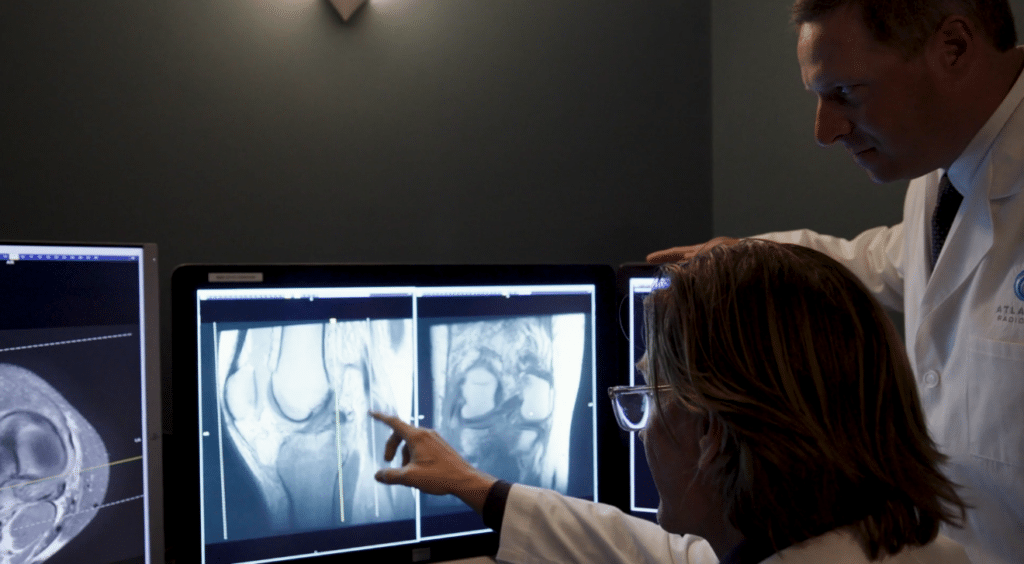What is Magnetic Resonance Imaging (MRI)?
MRI is a valuable tool for detecting everything from heart and vascular disease, stroke, cancer and disorders of the muscles and joints.
MRI has been proven to be the most effective imaging technique to diagnose the majority of bone and joint disorders, icluding the various causes of acute injury and chronic pain. It greatly enhances the ability of the caring physician to direct each patient to the appropriate therapy.

How we perform MRI
MRI uses magnets to produce magnetic fields that allow for determining differences between normal and abnormal anatomy. The great advantage of MRI for physicians and patients is that it can often help avoid unnecessary surgery and more invasive diagnostic procedures.
Most MRI scans can be completed in less than 45 minutes. Occasionally, IV contrast is needed to enhance images of certain tissues, organs and joints.
Types of MRI
- Face/Orbits
- Hip, Knee, Ankle, Foot
- Spine-Cervical, Thoracic, Lumbar
- Breast
- Shoulder, Elbow, Wrist, Hand
- Sacroiliac Joints
- Head/Brain
- Cerebrospinal Fluid
- Procedures include Arthrograms of Any Joint
- Musculoskeletal Imaging



